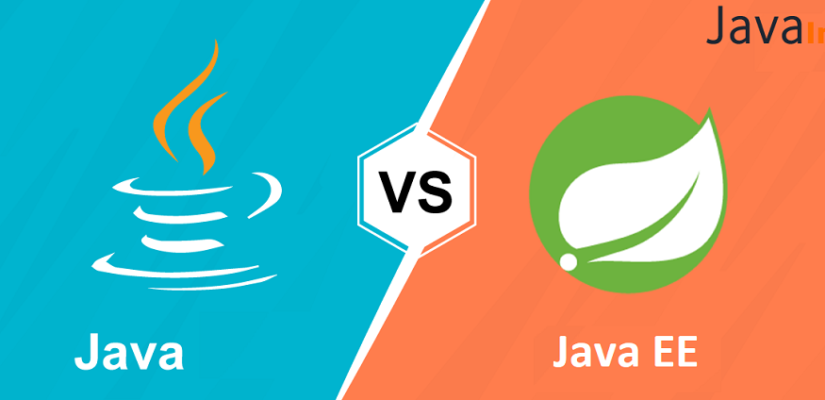
Java Vs Java EE: Which is a Better Choice for Web Application Development in 2021?
Java is a reputed programming language and also a popular computing platform. A platform is a combination of hardware or software environment in which application run. Java basically comprise of two components Java Virtual Machine and Application Programming Interface. It is now available as free software under the terms of GNU General Public License. On the other hand, Java EE is a structured application mostly used to build APIs for Desktop Applications like antivirus software, and games. It is mainly used to build web applications. In this blog, we will discuss about Java Vs Java EE for better understanding and secure development of web application. But before discussing the differences it is important to learn some crucial terms of both Java and Java EE.
Installation of Java on your System
Java SE can be accessed easily from Oracle’s website for downloading and installing on a machine. To ensure if it is installed or not properly, run the command on Command Prompt.
What is Java version?
It provides the details of installed JDK software version. Once Java is installed, simply set Environment Variables. It is important to provide the path where JDK is installed on the device. It can be performed as.
- Right-click on MyComputer and select.
- Open Advanced System Settings.
- Click on new, add PATH, and provide a physical path of the bin folder, present in installed JDK folder.
Java Program Structure
It becomes essential to know Java program structure in order to build Enterprise Applications in Java in a streamlined manner.
- Make sure the Java code is case sensitive.
- Simply define class first when planning to write a Java program.
- The name of the class in Java is the program’s name, and the same name is mentioned in the filename. For instance, in a sample program where the name of the class is “Hello”, then this file will be named “Hello.Java”.
Key Differences between Java and Java EE
Below are important points describing Java Vs Java EE for better understanding?
- Java SE is the core Java language while Java EE platform is based on top of the SE platform, mainly used to build large-scale web applications.
- Java is known to define everything from the basic types and objects, hence provides all sort of core functionalities. The Java EE platform offers an API and runtime environment to build and run big-size applications.
- Java platform comprise of a virtual machine, deployment technologies, development tools, and other libraries. While Java EE comprise of Enterprise JavaBeans, Java Server Pages, and Servlets.
- Java has no code sliced into multiple layers, while Java EE is based on the multi-tier application; this makes the application robust as well as secure.
Typical Java EE application has the following layers:
1. The Client Tier
This layer is where most of the user interaction occurs. Applications here access Java Serverin this tier, which is mainly positioned on a separate device. Once a request is send by the client, the server processes this request and respond back to the client.
2. The Web Tier
This layer manages the interaction between the client and the business tier.
3. The Business Tier
This comprises business logic and all core functionalities. All these three layers have significance in the world of Java Application Development Company to build a secure web application.
Frequently Asked Questions
1. What does Java EE mean?
The Java EE stands for Java Enterprise Edition, which was earlier known as J2EE and is currently known as Jakarta EE. It is a set of specifications wrapping around Java SE (Standard Edition). The Java EE provides a platform for developers with enterprise features such as distributed computing and web services.
2. When should I use Java EE?
The aim of the Java EE platform is to provide developers with a powerful set of APIs while shortening development time, reducing application complexity, and improving application performance. The Java EE platform is developed through the Java Community Process (JCP), which is responsible for all Java technologies.
3. What is the function of Java EE?
The Java EE platform is built on top of the Java SE platform. The Java EE platform provides an API and runtime environment for developing and running large-scale, multi-tiered, scalable, reliable, and secure network applications.
4. How much does it cost to develop a web application?
The cost of web application development is calculated on the basis of features and functionality needs to be integrated within.
Wrapping Up:
Both Java Vs Java EE has their own advantages. Thus before starting with web application development, one should consider the following parameters.
- Desktop or Web Application: Java is mainly used for desktop applications and Java EE especially for web applications.
- Features: Java EE has several enterprise-wide features including Servlets, EJB, and many more. Using these will surely make web application development simple and improve application efficiency. Furthermore, Java EE has all the core features of Java as it is based on SE. Alternatively, you can hire Java developer to opt for Java if an application has basic functionalities.
- Security: Since Java EE applications are multi-tiered, offering a layer of security and reusability.

